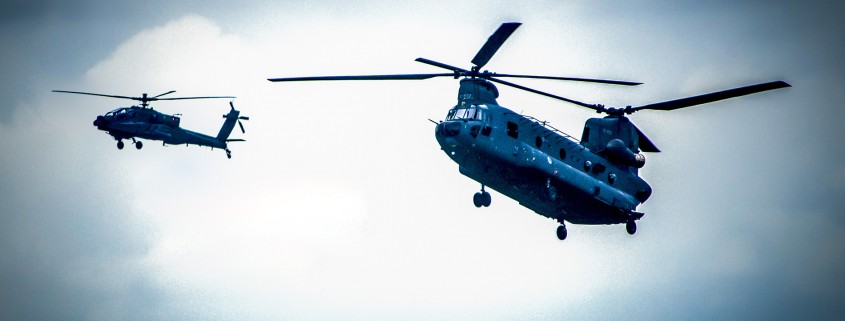Training facilities for helicopter missions can help the armed forces to prepare their pilots for helicopter missions more effectively. The Dutch armed forces Defense Helicopter Command (DHC) commissioned NLR to advice in the specification of a training facility for helicopter missions.
Military simulators are a growth market even in times of austerity. Increasingly realistic simulation is a cost-effective and eco-benign substitute for operating real aircraft, vessels and vehicles. DHC assigned NLR to advice on the specification of a training facility to prepare personnel for a wide array of helicopter missions.
For this training facility, NLR will help to establish the set of requirements. The main requirement was that the simulators should be functional for tactical training. Tactical training does not require precise replication of cockpit equipment, engine models, and the like. Therefore the study related primarily to the simulation of tactical training. Other simulation facilities are already in place for pilot training.
Nowadays, helicopter missions serve a wide range of purposes. They may involve troop transportation in enemy territory with heavy Chinook transport helicopters supported by Apache attack helicopters. But training may also be required for NH-90 helicopter landside operations.
Such missions are complex, which means realistic training is multifaceted. Inter-team communications between the different helicopters, military air traffic control and any ground troops all have a role to play. Another key element is intra-team communication between individual flight crew members: pilots, gunners, and the loadmaster.
For this study, NLR gathered data from pilots and other personnel. Apache pilots revealed, for instance, the maximum distance at which they could identify Chinooks with certainty in specific weather conditions and over various types of terrain. Based on this kind of data, NLR specified requirements for hardware such as image projectors and software such as terrain databases. This allows the helicopter pilots to perform their missions to train as realistically as possible
This training facility can help the armed forces prepare personnel for helicopter missions more effectively and at relatively low cost, which also means that Dutch helicopter crews can carry out these missions in greater safety.



